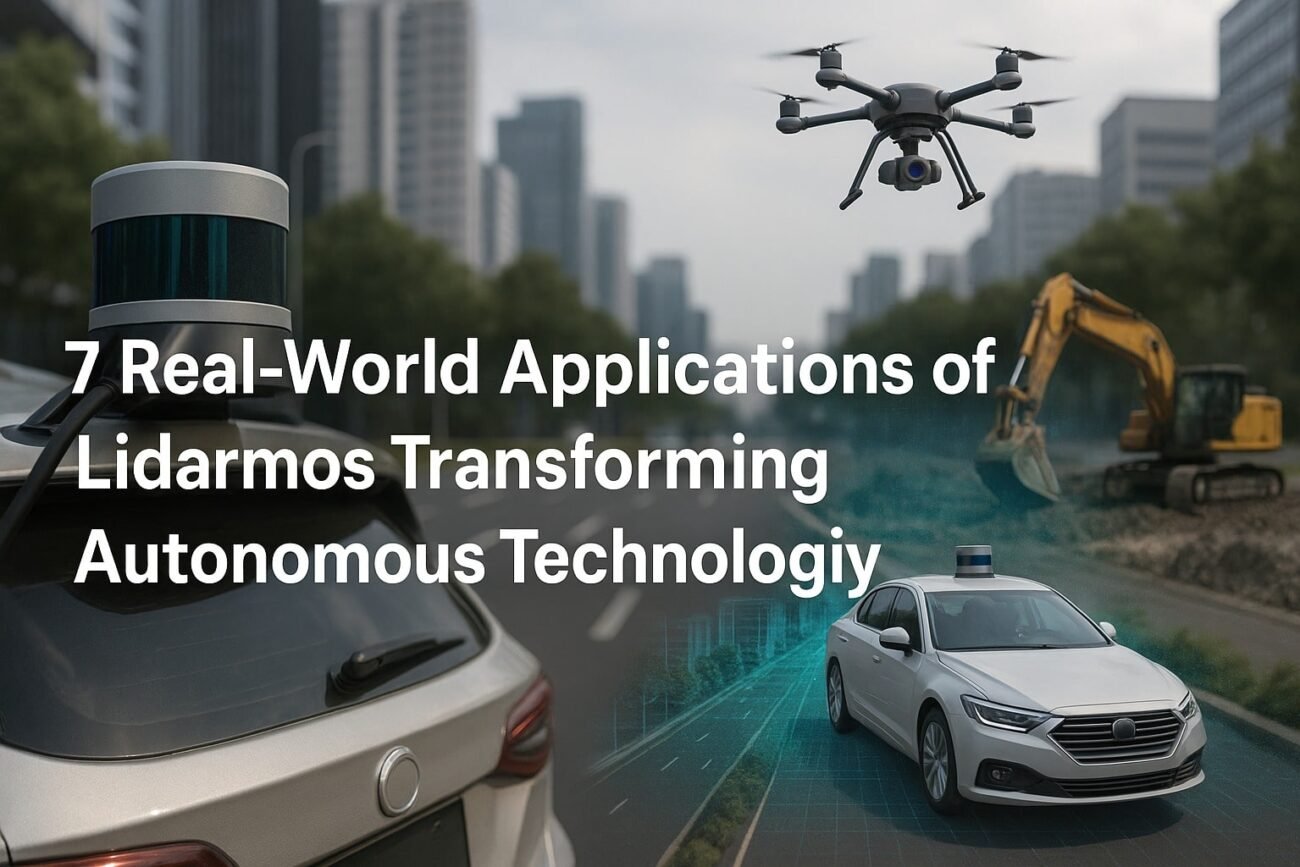In a world where technology is moving faster than ever, new terms like Lidarmos are beginning to shape conversations around innovation, automation, and intelligent sensing. But what exactly is Lidarmos, and why is it becoming relevant across industries like transportation, infrastructure, and environmental monitoring?
This comprehensive guide will walk you through what Lidarmos means, how it works, and what makes it a promising development in the field of smart systems.
What Is Lidarmos?
Lidarmos is an emerging concept that refers to the integration of LiDAR technology with autonomous mapping and decision-making systems. The term blends “LiDAR” (Light Detection and Ranging) with elements of autonomous modeling or mobility systems, pointing toward real-time spatial awareness powered by intelligent automation.
Put simply:
Lidarmos is the use of LiDAR sensors in systems that can scan, understand, and respond to their environment without human input.
It builds on the proven precision of LiDAR but goes one step further—enabling machines and software to interpret 3D data and make smart decisions on the spot.
How Lidarmos Works
At its core, Lidarmos systems are built using three primary components:
- LiDAR Sensors – Emit laser pulses to map the surroundings in 3D with high accuracy.
- Data Processing Algorithms – Convert point-cloud data into usable spatial models.
- Autonomous Decision Logic – Use artificial intelligence to detect objects, assess risks, and navigate or respond intelligently.
For example, a Lidarmos-powered drone could fly over a construction site, detect obstacles in real time, adjust its path automatically, and even identify structural defects—all without manual control.
Key Applications Of Lidarmos
Autonomous Vehicles
Self-driving cars rely heavily on LiDAR to see their environment. With Lidarmos, these vehicles not only detect obstacles but can interpret complex road scenarios and act in milliseconds—enhancing safety and precision.
Smart Infrastructure
Cities can integrate Lidarmos into traffic systems, road maintenance tools, or pedestrian monitoring platforms. Real-time LiDAR data allows for predictive traffic management and early fault detection in infrastructure.
Environmental Monitoring
Lidarmos enables drones and monitoring devices to map forests, flood zones, or coastlines and respond dynamically. This is especially helpful in natural disaster response and climate change research.
Construction And Surveying
In industries where accuracy is crucial, Lidarmos allows for autonomous land surveys, 3D site modeling, and real-time adjustments during builds—minimizing errors and improving safety.
Agriculture
Farmers can use Lidarmos-enabled drones or tractors to scan crop fields, detect plant health, and adjust irrigation or fertilization automatically.
Why Lidarmos Is Important
Lidarmos stands out from traditional mapping tools because of its intelligence and autonomy. Here’s why it matters:
- Greater Efficiency – Automates tasks that normally require hours of manual labor.
- High Accuracy – LiDAR offers centimeter-level precision.
- Real-Time Response – Unlike conventional systems, Lidarmos reacts instantly.
- Cross-Industry Impact – Useful in transportation, agriculture, energy, defense, and more.
- Cost Savings – Reduces human error and operational delays, leading to better ROI over time.
Challenges Of Lidarmos Adoption
Despite its promise, Lidarmos is not without hurdles:
- High Initial Costs – Quality LiDAR sensors and edge-computing systems are expensive.
- Data Volume – Real-time LiDAR generates massive datasets requiring robust processing infrastructure.
- Standardization – The lack of a formal definition or regulatory framework for Lidarmos makes large-scale deployment complex.
- Privacy Concerns – Using real-time scanning in public areas could raise ethical and legal questions.
Lidarmos Vs Other Technologies
| Feature | Traditional LiDAR | SLAM Systems | Lidarmos |
| Data Accuracy | High | Medium | High |
| Real-Time Decision Making | No | Basic | Advanced AI-driven |
| Human Involvement | High | Moderate | Minimal to none |
| Use Case Complexity | Simple mapping | Local navigation | Full environmental logic |
The Future Of Lidarmos
The technology behind Lidarmos is expected to expand as hardware becomes more affordable and AI integration improves. Companies are already investing in smarter drones, vehicles, and robotics platforms that combine real-time sensing with automated decision-making.
In the next five years, we may see:
- Wider public use (e.g., in smart traffic systems or public transport)
- Open-source toolkits that help startups build Lidarmos-like platforms
- New academic fields studying LiDAR-based autonomy
- Ethical frameworks and policies to guide safe deployment
Is Lidarmos An Official Term?
At the time of writing, Lidarmos is not yet an officially recognized term in scientific literature. However, it is increasingly being used in tech articles, blogs, and whitepapers (such as the one on BuzzBlog) to describe the evolution of LiDAR-based autonomy.
As the technology gains adoption, we may see Lidarmos appear more frequently in academic and commercial contexts.
Conclusion
Lidarmos represents a new generation of LiDAR-enabled autonomous systems—bringing together sensing, modeling, and intelligence. While still a developing concept, it holds enormous potential to reshape how machines interact with the real world.
By understanding and adopting Lidarmos, industries can make operations safer, more efficient, and smarter than ever before.
As with any new tech, adoption must be balanced with thoughtful planning, ethical use, and long-term sustainability. But one thing is certain: Lidarmos is a term worth watching.
FAQ’s:
Is Lidarmos Just Another Name For Lidar?
No. LiDAR is the core sensing technology. Lidarmos refers to systems that combine LiDAR with AI, autonomy, and real-time response capabilities.
What Industries Are Already Using Lidarmos Concepts?
Sectors like automotive, construction, environmental monitoring, and smart infrastructure are early adopters of Lidarmos-style technology.
Can Lidarmos Be Integrated With AI?
Yes. In fact, AI is a critical part of the Lidarmos ecosystem. It enables machines to interpret LiDAR data and make decisions based on it.
Is There Commercial Software Or Hardware Labeled ‘lidarmos’?
Not yet under that specific name. But many LiDAR platforms (like Velodyne, Ouster, and RoboSense) support similar capabilities through SDKs and AI plugins.
Hungry for more? Head over to my website for fresh articles.
5 Common Reasons For The “Error Susbluezilla New Version” And How To Fix Them
